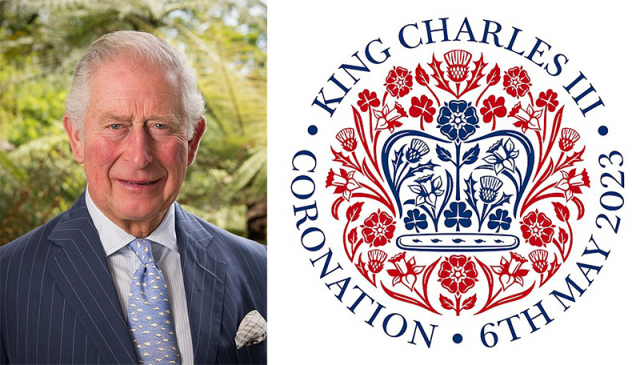The Coronation of King Charles III

Saturday 6 May 2023 will see the first coronation of a British monarch for 70 years. Only those now in their 70s or above will remember the last one. The coronation ceremony has its roots in traditions over a thousand years old.
Whether you are a Royalist or a Republican or something in between this is an historic year in British history and one that might be a turning point for other nations’ relationship with the UK.
Linked below are some podcasts and articles that will give you some understanding of the significance of this event.
Schools resources: We also have new coronation resources for use in Primary and Secondary schools.
10 interesting facts about the Coronation in May 2023
1. The UK is the only country in Europe to still carry out a coronation ceremony for the monarch.
2. Westminster Abbey closed in late April to prepare for the Coronation on 6 May – for the Coronation of Elizabeth II it was closed for eight months to prepare.
3. The oil that is used to anoint the King was made in Jerusalem to a special and secret recipe containing sesame, rose, jasmine, cinnamon, neroli, benzoin and amber – as well as orange blossom. It will be ‘animal free’ for the coronation in 2023 suggesting that the musk that had previously been included will not be included this time. This recipe is based on those used before but it is not an exact copy, as that was lost when the apothecary that had created the previous ones ceased being in business.
4. The Coronation Chair used in the ceremony is the one built for Edward I in the 13th century. It has undergone extensive renovation so that it can be used this time as the wood has become fragile over the years. When it was first used 700 years ago it was covered in gold and had painted decorations on it. When it was on display during the 17th and 18th centuries people carved graffiti into the back of it. And it was even damaged due to an explosive device that went off near it during campaigns by the suffragette movement in 1914.
5. King Charles III will be the 40th monarch to be crowned at Westminster Abbey.
6. The King will wear spurs at the Coronation that were made in 1661 for King Charles II. However, records show that spurs have been part of the Coronation attire since King Richard I, the Lionheart, at his Coronation in 1189. The gold, leather and velvet spurs symbolise knighthood, and they were altered in 1820 for King George IV.
7. Not all partners of the sovereign are crowned, but for those that have been in the last two hundred years they have worn the Queen Consort’s Ring at the Coronation. It is a ruby in a gold setting, originally made for the Coronation of King William IV and Queen Adelaide in 1831. It has subsequently been used at the Coronations of Queens Consorts Queen Alexandra, Queen Mary and Queen Elizabeth the Queen Mother. It will be worn by the new Queen Consort, Queen Camilla, on 6 May.
8. Two state coaches will be used by the King for the procession. The Diamond Jubilee State coach will be used to take the King and Queen Consort to Westminster Abbey; only the late Queen Elizabeth II, with the late Duke of Edinburgh and a few Heads of State have previously travelled in the coach. After the Coronation service the newly crowned pair will travel in the Gold State Coach first used by George III to the State opening of Parliament in 1762. That coach weighs four tonnes and so is pulled by eight horses and only travels at walking pace.
9. St Edward’s crown which is used at the moment of coronation weighs 4 pounds 12 ounces. It is made from solid gold and jewels. It is based on the medieval crown used until the removal of the Monarch from England. The original crown was melted down in 1649 and was believed to have been the one used by Edward I, the Confessor. The St Edward’s crown was made for the restoration and the coronation of Charles II.
10. King Charles III is the oldest English King to ascend to the throne and be crowned.
Historian members can read a longer version of this article here (from The Historian magazine).


